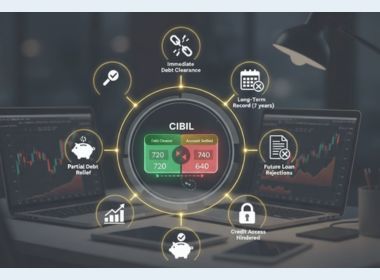Search Suggestions
- Gold Loan
- Money Transfer
- Mutual Funds

What is the difference between Part payment, Pre-payment, and Pre-closure?
Our financial goals and requirements keep on changing during our lifetime and so does the type of loan required. For a newly married person, a home loan may be required for setting up a home. An Education Loan may be required for his children’s education. Or, if there’s a medical emergency, he may choose to take out a Gold Loan or Personal Loan to procure funds at short notice. Before applying for any kind of loan, a borrower must fully understand the features, repayment terms and conditions, fees, charges, etc.
Table of Content
- What is a Prepayment Facility?
- Benefits of Pre-Payment
- Pre-Payment Rules, Charges, and Penalties
- Conclusion
He must also understand the implications of making pre-payment, post-payment and part-payment toward the loan before the tenure of the loan ends. There could be penalties for partial or full loan pre-payments. A borrower must evaluate all these factors before deciding his actions about the loan.
What is a Prepayment Facility?
Prepayment is a facility that allows you to repay your loan, either in part or in full, before the end of the loan term. If you have surplus cash, you can pay it toward your loan account, in addition to the EMI you are already paying. Most banks allow you to prepay the outstanding principal amount after one year.
Need Funds Now? Get Your Personal Loan Approved Quickly
There are two types of prepayments:
Partial Prepayment or Part Prepayment: In a part payment option of the prepayment facility, the loan account continues to operate and is not closed. The EMI and or tenure might be adjusted post-payment of a portion of the outstanding loan amount. This option is ideal for someone who gets yearly bonuses or incentives.
Foreclosure, Pre-closure, or Full Prepayment: Foreclosure, also known as Pre-Closure, is making a pre-payment in full of the outstanding principal amount in a single installment before the end of the loan term. In this option, post payment of the entire outstanding amount, the loan account is closed. Foreclosure can be initiated by either the borrower or the lender.
Foreclosure Initiated by a Borrower: In this case, a borrower intimates to the lender of his intention to foreclose his loan. The lender will calculate the foreclosure balance after evaluating the outstanding loan amount, interest portion, and other terms of the loan. The lender gives the go-ahead for foreclosure if the pre-closure criteria are met. After the loan account is closed, a No Dues Certificate (NDC) is issued to the borrower.
In the prepayment of a Home loan, the property papers are returned to the borrower after post full and final payment of the loan. For Gold Loans, the pledged gold articles are returned and in case of a Loan against an Insurance Policy, the original Life Insurance bond document is given back to the borrower. Since in a Personal Loan, no security is obtained by the lender, only an NDC is issued after the pre-closure of the loan.
Foreclosure Initiated by a Lender: Foreclosure or pre-closure proceedings can be initiated by the lender too if a borrower is unable to repay the loan amount and defaults on EMIs. In such a scenario, the lender issues notices to the borrower to regularize the loan account and if it is not done, a final auction notice is sent. The lender auctions the borrower's collateral and after recovering an amount equivalent to the outstanding loan, the loan account is closed.
Benefits of Pre-Payment
- It reduces the total outstanding principal. This, in turn, either reduces the interest liability by reducing the EMI amount for the rest of the loan tenure, or the loan tenure gets shortened by keeping the EMI amount same.
- Allows you to reduce the cost of borrowing by saving on interest.
- Allows you better utilize idle cash which sometimes could get wasted making unnecessary purchases.
- Since the outstanding principal gets reduced, the debt amount to your name gets reduced and hence your credit score could see an increase.
- Allows you to become debt-free faster
Need Funds Now? Get Your Personal Loan Approved Quickly
Pre-Payment Rules, Charges, and Penalties
Some lenders may impose a penalty of 2% to 5% for loan prepayment. This fee is charged on the outstanding principal amount. An online EMI Calculator will give you an estimate of the cost of the loan and your savings with the prepayment facility. The loan amount, interest rate, tenure, processing fee, method of prepayment, and foreclosure charges are some of the details you are required to fill in. It is to be noted that the Reserve Bank of India has mandated lenders not to charge any penalty on the pre-closure of loans. However, this rule is only for those loans that are taken on a floating rate and not on a fixed rate of interest.
Conclusion
Before deciding on prepayment in full toward your loan, do consider the charges and prepayment penalty. Foreclosure of a loan will make sense only when the amount of interest saved is greater than all the charges combined.
- Instant Personal Loan
- EMI Calculator
- Document Required
- Track Personal Loan
- Interest Rate
- Procedure and Eligibility
CATEGORIES
OUR SERVICES
-

Credit Score
-

Gold Loan
-

Personal Loan
-

Cibil Score
-

Vehicle Loan
-

Small Business Loan
-

Money Transfer
-

Insurance
-

Mutual Funds
-

SME Loan
-

Corporate Loan
-

NCD
-

PAN Card
-

NPS
-

Custom Offers
-

Digital & Cashless
-

Milligram Rewards
-

Bank Mapping
-

Housing Finance
-

#Big Business Loan
-

#Gold Loan Mela
-

#Kholiye Khushiyon Ki Tijori
-

#Gold Loan At Home
-

#Sunherisoch
RECENT POSTS

Why Are Gold Loans the Best Option When Banks Reject Your Personal Loan?
Know More
Struggling with low CIBIL? Here’s How a Gold Loan Can Still Get You Funded
Know More
What is a Top-Up Loan? Eligibility Criteria Explained
Know More
Top Factors That Influence Mortgage Loan Interest Rates
Know More
What is a Loan Against Mutual Funds and How Does it Work?
Know More
What is Working Capital? Meaning, Formula & Importance
Know More
Understanding KDM Gold and Why it’s Banned
Know More
Gold loan boom: 3,000 new branches to open in India in 12 months
Know More
Gold Loan Boom: Rs 14.5 lakh crore market spurs NBFCs to add 3,000 branches
Know More
How BNPL Affects Your Credit Score
Know MoreFIN SHORTS

What Are Co-Pay and Deductibles in Insurance Policies?
Know More
Should You Take a Loan Against Your Mutual Fund or SIP?
Know More
Top 5 Best Mid-Cap Mutual Funds to Watch in 2026
Know More
Are Personal Loans Right for Retirees? Key Points to Consider
Know More
What Happens to a Personal Loan After the Borrower Dies?
Know More
Best Loan Choices for Credit Scores of 580 and Below
Know More
7 Reasons Why a Gold Loan Is the Best Option for Small Businesses
Know More
10 Reasons Why People in India Prefer Physical Gold
Know More
Real Estate vs Gold: Which Is a Better Investment in India?
Know More
10 Common Mistakes That Make Investors Lose Money in Mutual Funds
Know More
10 Reasons Why Gold Has So Much Appeal in Uncertain Times
Know More
7 Ways Settling Debt Can Impact Your CIBIL Score
Know More- South +91 99469 01212
- North 1800 313 1212


